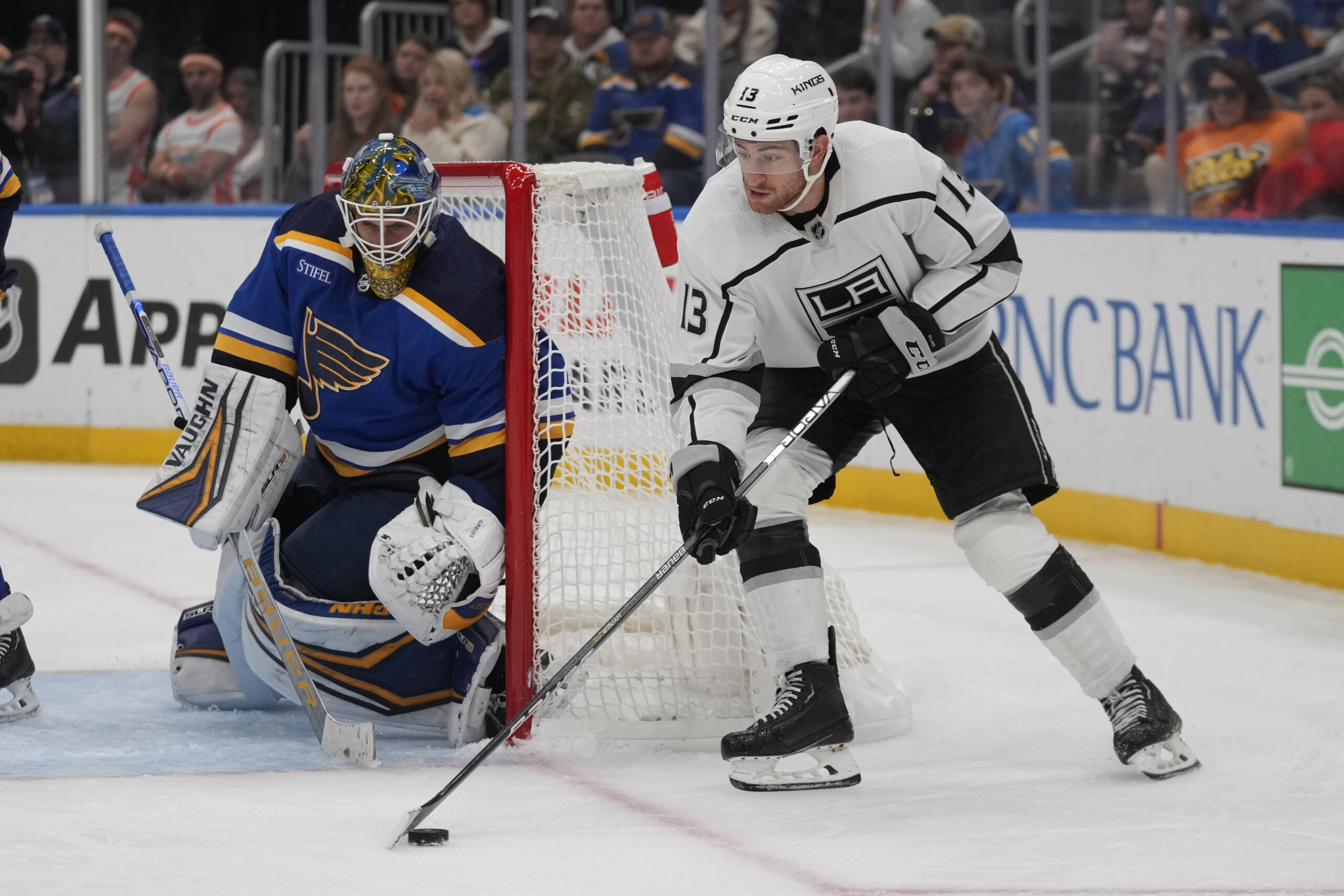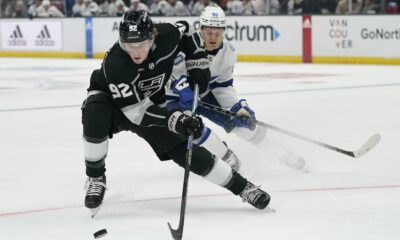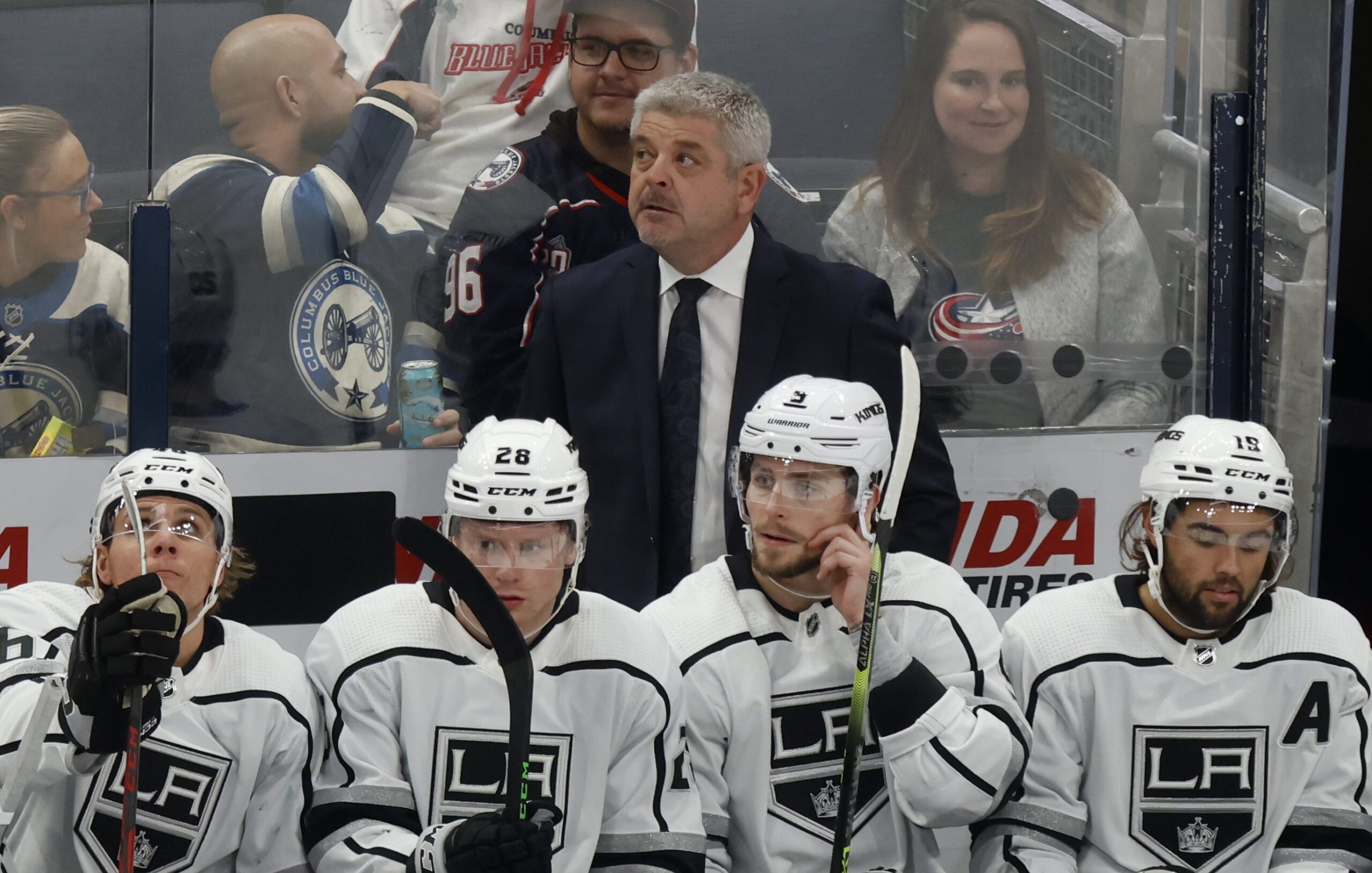Featured
Examining Kings’ ‘Slow Burn’ Player Development

The Los Angeles Kings, and in particular head coach Todd McLellan, have received their fair share of criticisms over the last few seasons regarding player development.
Plenty of fans feel that players, especially higher draft picks, haven’t developed at the right rate. And watching those high-draft picks spend most of the season grinding it out on the fourth line or third pair — sometimes even from the press box or not on the roster at all — frustrates fans.
The Kings aren’t an organization that gives a long leash to young players and rarely thrusts them into significant roles early in their careers.
And as Director of Amateur Scouting Mark Yannetti pointed out on a recent episode of All the Kings Men, that’s always been the case.
“We’re a slow-burn organization, we have been for 15 years,” said Yannetti. “The development process is a longer-term one.”
This comment resurfaced a thought I’ve had for a while about the Kings’ development process. Is it wrong or just different?
Where it Differs:
The big area where the Kings differ compared to other organizations is their reluctance to play young players high in the lineup.
Compare that to an organization like The Ottawa Senators or Anaheim Ducks in recent years. Ottawa thrust players like Tim Stutzle, Josh Norris, Thomas Chabot and Jake Sanderson straight to the top of the lineup from day one. And the Ducks did the same with players like Trevor Zegras and Jamie Drysdale.
In a lot of ways, it’s worked. Those players developed quickly, particularly in their offensive game, and the teams were willing to deal with growing pains. And there certainly have been growing pains.
None of those players have finished a season as plus players and none of them have played in the postseason.
A lot of that comes down to organizational priorities too, those organizations’ main focus is to develop players right now and the Kings’ goals are different.
But even when winning wasn’t as big a priority, the Kings stayed true to their philosophy.
Adrian Kempe’s early career and Gabe Vilardi’s first full season were spent near the bottom of the league.
They both bounced around in the middle-six and swapped from center to wing. Neither where given extended looks at the top of the lineup despite their high-end offense.
Because that’s how the Kings develop players. Where most organizations give young players a long leash, wanting them to find their offense at the next level first and develop the 200-foot game later, the Kings do the opposite.
Players have to display a responsible, 200-foot game before earning ice-time higher in the lineup. It’s often frustrating to watch for fans, and frustrating for players.
McLellan has referenced how difficult that process was for Kempe and Vilardi and even pointed out that it led to plenty of fights between the player and coaching staff. Mentioning that both needed some “tough love” at times.
Recent Success:
Kempe and Vilardi’s respective breakouts over the last two seasons are what first planted this idea in my head. Two seasons ago when Kempe again looked to have stalled out in his development, and most felt he would top out as a middle-six streaky scorer.
Then it clicked, he figured out what McLellan wanted from him and he scored 35 goals. Kempe then proved he wasn’t a one-season wonder and scored 41, while massively improving his overall game.
And Vilardi experienced something similar, an even more dramatic arc compared to Kempe. After spending a majority of the 2021-22 season with the Ontario Reign, rumors began that Vilardi might be traded and a lot of fans had written him off in Los Angeles.
Then it clicked, and he became one of the Kings’ most complete players last season.
These players began doing, “the things players don’t want to do,” as McLellan likes to put it. Things like blocking shots, putting defense first and focusing on the little details in their games.
Lo and behold, they began to see their ice time and production increase.
When it happened with Kempe it seemed like a coincidence. Then it happened with Vilardi and I started wondering if it was a consequence.
When discussing young players McLellan likes to use the phrase, “You don’t need stats to stay.” Meaning, there are a lot of ways to make an impact and secure your spot on the roster without scoring.
It’s a difficult thing for young players to figure out, especially players who have made a career out of offensive production.
McLellan’s also talked about how important a “B” game is for players like Vilardi and Kempe to develop. How well they play when the puck isn’t going in. Can you be relied upon to still impact the game when you go through a cold streak?
Early in their career, they couldn’t, now they can.
It’s another difference between the Kings and other teams. A lot of teams won’t care about a player’s “B” game early on, again, if you have the offensive numbers that’s all that matters. They’re okay with the lulls between point streaks where a player might struggle.
That’s not what the Kings are looking for.
Once players figure out how to do the things they don’t want to and develop a “B” game, the coaches trust them and they usually begin to flourish.
How This Affects Current Prospects:
For a lot of the Kings’ current prospects, this process has already begun.
Look at a player like Rasmus Kupari. The offensive numbers aren’t where they need to be, not even close. But the rest of his game is absolutely developing.
He’s become one of the best faceoff takers on the team — he was one of the best faceoff takers in the league after Jan. 1 — is a reliable penalty killer and forechecker.
Quinton Byfield saw similar developments last season too. Even when the offense wasn’t flowing for him, coaches and teammates continued to praise his 200-foot improvements. And he stayed on the top line because of it.
The Kings felt his overall game, and its impact on that line warranted the spot. It’s hard to disagree with that too given their success.
Even a player like Arthur Kaliyev, whose season was derailed by an injury, has seen big improvements in his complete game. Kaliyev was seen as a defensive liability in his draft year, it’s a big reason he fell to the second round, and he’s already begun to turn that around.
That’s how the Kings like it too. They want to see these players develop their complete game before moving them up the lineup. They don’t want growing pains in their top six right now.
They want a player who can jump right into a top-six role and excel in all facets of the game. Not just offensively.
That takes a while though. Very few players have that 200-foot game early in their career and that’s why patience is key for Kings prospects. Patience from the fans and the players themselves.
As frustrating as that can be at times.
Right or Wrong, That’s How the Kings Do It:
I’m not sure if this is the right way to develop players or not. Or if there even is a right way to develop players.
Maybe Vilardi and Kempe would have developed into the complete players we see today if the Kings developed them the “normal” way. Giving them a big offensive role early on, allowing that part of their game to shine and waiting for the complete game to follow.
Maybe both players would be offensive juggernauts that are liabilities in their own end. The kind of player that often doesn’t find success in the postseason.
We’ll never know.
It’s also possible that those two have succeeded in spite of this development strategy, not because of it.
But I think we’ll have a lot of answers in the next few seasons as players like Kupari, Byfield and Kaliyev hit the same age range Kempe and Vilardi broke out in.
If they begin to break out around 23-25, it’s a safe bet that this development strategy works. If not, if they all fail to develop into impact players, you have to then question this strategy.





